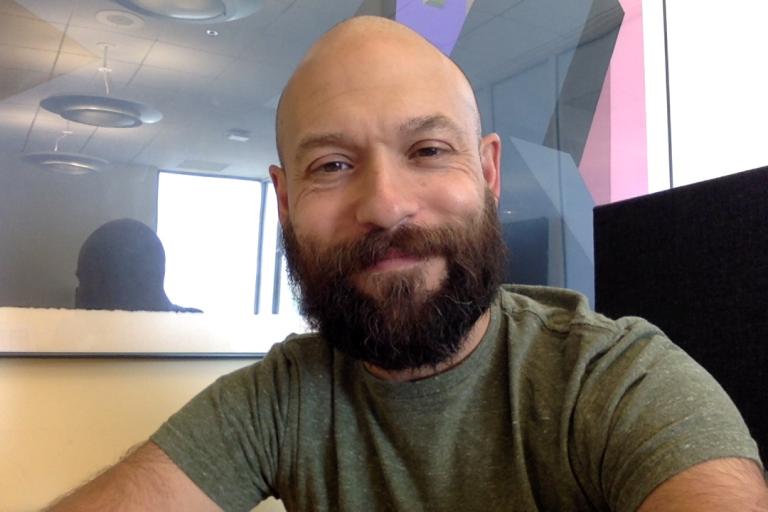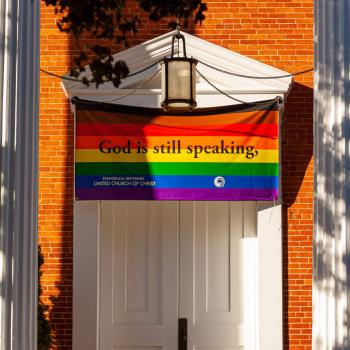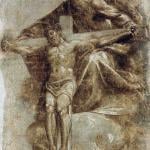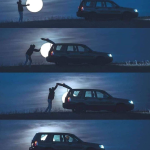At the heart of the biblical view of reality are three deep and abiding claims about the world. The claims themselves are found throughout the Scriptures. However, they are not always made explicit. The Bible simply presupposes them as true. They are true in virtue of the fact they accurately describe indelible features of the world God created. By “world,” I mean more than either the natural scientist or the social theorist would reduce the world down to. The “world” is more than just physical particles in motion or mental constructions of social “realities.” We live and move in a metaphysically rich cosmos that includes both these but also much more.
Given that there is a way things actually are, we must therefore strive to understand these three, biblical claims about our world. We do this in order to live well in the actual world God has chosen to make for us. However, due to the corruption that has occurred through sin, we struggle to recognize theses truths. Or, if we do recognize them, we fail to accept them as necessary and resist their claims upon us. The first error is a problem of the intellect, a noetic problem. The second is an issue of the will or the exercising of our own moral agency.
It’s A Very Western Problem
The three truths I will introduce have come under direct attack in the West for several generations. This is not entirely the case in other non-Western, or as some critical race theorists might say, “non-White,” cultures. In other parts of the world, especially the so-called “Majority World,” these truths are by-and-large assumed and human social life is shaped accordingly.
In the West, however, the suppression of these truths has not always been easy to identify. This is in spite of the fact that the attempt has been made to export this western, intellectual posture to other, non-Western, non-White cultures. Neither have the attacks on the validity of these truths been open for all to see. Their undermining has been gradual, creeping into the popular imagination over time.
Still, given the secularization of America and Europe, each feature of reality I will discuss has fallen out of the collective conscious of our culture. They are either no longer considered true, or valuable, or, worse yet, they are simply no longer considered. Those who mention or try to defend them are quickly labelled “oppressors” or “ideologues.” However, in their suppression, we do not thrive as creatures. Instead we deteriorate and subsequently find ourselves asking why. Without an explicit recognition of these three fundamental features of the world, we will be living and operating within them, yet doing so in ignorance.
Once we point out the neglect of these truths, it becomes easier to understand why there is little fertile soil for the Gospel of Jesus Christ in WEIRD (Western, Educated, Industrial, Rich and Democratic) cultures like America, Canada or Europe. The rejection of these truths is the West’s rejection of its own past, a past grounded in Christian thought and practice. For it is the philosophies of late modernity, late western modernity that have sought to undo them.
Thus, for the cultural soil of WEIRD nations to become fertile again, the recognition of these fundamental elements of reality will have to be recovered. This project consists in nothing less than a dramatic reconceptualizing of the world in which we live. Although it is far more a recapturing than a reconceiving. And, it is a recapturing that will almost happen inevitably, although to preach it is to participate in that recovery.
The three truths I am speaking of, the ones we must reclaim in order to remake civilization, are:
- the reality, necessity and value of hierarchy,
- the reality that things possess intrinsic (non-instrumental) value, and
- the dualistic nature of the world
Truth #1: The Necessity and Value of Hierarchy
Hierarchies are bad. The history of the world could be construed as one long series of failed hierarchies: the despotic hierarchies of ancient empires; the patriarchal hierarchy of every pre-modern culture; the hierarchy of the medieval Church or Islamic states today; the industrial hierarchies of capitalist nations and the oligarchical hierarchies of socialist ones; the racial hierarchies of colonial expansionism. One could make a fairly extensive list of hierarchical forms and structures that seem to have failed humanity in quite extraordinary ways.
Moreover, the more robust the hierarchical structure, the greater the potential for the structure to be abused and to cause abuse. In turn, the greater the abuse of hierarchical structures, the greater the human carnage. In a scene from the 1959 version of Lew Wallace’s classic novel Ben Hur: A Tale of the Christ, Frank Thring, playing Pontius Pilate, encapsulates the dark truth of great hierarchies putting these words into Pilate’s mouth:
Where there is greatness, great government or power, even great feeling or compassion, error also is great. We progress and mature by fault.
Of course the error that Thring’s Pilate speaks of is the tyranny of the Roman Empire itself–the height of human culture and human depravity for nearly 1000 years. Not to mention the apparatus for the only actual Deicide ever committed. And so it seems to go with human hierarchies, almost as if by a law of nature, they are quickly corrupted and quick to corrupt. Given the long history of bad hierarchies, therefore, it is understandable to question whether there is ever any real progression or maturity, or only fault and error.
Roman Catholics have often placed the blame of modern, anti-hierarchical thought in the West at the feet of the Protestant Reformers, Luther especially. But one would have to contest that claim. For clearly the Reformers were not protesting hierarchy as such. They were only protesting the Roman hierarchy in particular– its religious abuses and faulty, theological dogmas. And while the Reformational churches’ models for church governance were, and still are, decidedly thinner than that of the Roman Magisterium, nowhere will one find an apostolic church that does not assume some hierarchical structure (usually in the form of a “plurality of elders”).
Regardless of the culpability one might place upon the Reformers of the 16th century, the non-religious push to eliminate hierarchy really begins in the 19th-century. And since the time of thinkers like Marx and Engels, there has been a steady drumbeat in the West about the vital need to dismantle all hierarchy as a necessary condition for ushering in the utopian society.
The Indispensability of Hierarchy
The only problem is that as bad as any particular hierarchy might be, be it present or historical, hierarchy is indispensable for human flourishing. First and foremost, hierarchy literally cannot be undone. Any attempt to undo a particular hierarchy always results in another hierarchy taking its place. This too is as regular as a law of nature, not to mention the theme of one of the greatest rock anthems of all time.
Classical Marxism, devised with this intent in mind: to dismantle hierarchy through economic equality, inevitably had to become hierarchical in its own implementation. Unfortunately, Communist nations like Russia, Cambodia, Cuba and China did not only fail to dismantle hierarchy, but produced hierarchies of their own–and rather malevolent ones at that. Every attempt to undo civil or religious hierarchy requires both a hierarchy to do so and ends in the reemergence of the same. Thus the human question will never be about whether hierarchy, but always about which hierarchy.
Second, without hierarchical boundaries and clearly defined roles of authority, human beings simply fail to launch. We flounder psychologically, physically and spiritually if there is not a structure in which we can place ourselves (or be placed). This is regardless of whether we find ourselves at the top or the bottom or somewhere in the middle. In fact, it is usually best to be in the middle–one of the few things Rousseau actually got right.
Certainly the goal in any decent society would be to create the conditions where there is potential for mobility within a hierarchical structure. Although even there, the idealistic notion of endless opportunity or mobility may itself not be in human being’s best interest. I have met many a young person today who struggles with what seems to be too many potential life choices. That much freedom can actually hinder us from beginning life-long, profitable tasks. Ultimately, as counter-intuitive as it may seem, it is better for human beings to be at the bottom of a fixed and recognizable structure than to be plunged into the total chaos of non-structure.
Human beings can adapt to even the most strenuous conditions, so long as there are actual conditions to adapt to. Dante recognized this: his infernal vision of hell as an inverted celestial realm, at least allowed the damned some semblance of coping with their eternal torture. In rare moments in The Inferno, we see Dante grant the damned this ability:
And it is the glory of the Inferno that, though the tortures are real, as they are not in Milton’s Hell, Dante again and again breaks free from the theological implications of his theme, and allows the Spirit of man to emancipate the victims from their doom, as when Farinata rears himself up in his icy pit, as if in scorn of Hell ;’ or when Ulysses in the midst of the flame, remembers the great heartening words he had uttered to his desponding comrades, as he was leading them out on that last voyage to discover ‘ the unpeopled land towards the sunset.’
C.H. Herford, “Dante and Milton“
In spite of their existence in the lowest parts of the great cosmic hierarchy, the damned at least have knowledge of their place. That knowledge allows them to be lifted “above the implications of their condition,” even if only for a moment (Herford, 222). This is in many ways a preferable vision to any of Kafka’s worlds, for example, where “K” can never cope or rise above his condition because he can never ascertain the boundaries or structure of his world.
The Great Chain of Being
And so we are stuck with hierarchies, whether we like them or not. Hierarchy pervades the animal world and the human socially constructed world. “Why?,” one might ask. Because hierarchy within creation reflects the archetypal hierarchy that grounds all others– the hierarchical relation between God, the Creator, and everything else. It is the hierarchical relationship between the Ground of All Being and all derived beings, between the Necessary Reality and contingent realities that is reflected in both natural hierarchies and socially constructed ones.
In the introduction to his commentary on Genesis, Nahum Sarna illuminates the biblical assumption of hierarchy:
The God of Genesis is the wholly self-sufficient One, absolutely independent of nature, the supreme, unchallengeable Sovereign of the world, who is providentially involved in human affairs. He is, therefore, Lord of history. And the human being in Genesis–the pinnacle of Creation–is a creature of infinite preciousness who enjoys a unique relationship with God. Humankind is endowed with free will and, consequently, is also charged with moral responsibility and inescapable accountability. Moreover, the human race constitutes a single family whose ultimate destiny is determined by God Himself.
Sarna, Genesis, xii
Ontological hierarchy is inescapable and ontology structures moral thought and action. Thus, no matter how much modern men and women may protest, we will always wind up building up and operating from within some form of hierarchical structure.
Further, where hierarchical structures exist, there exist relations of authority. If God is over mankind, then all of us are under God’s authority. If man is the pinnacle of God’s creation, then human beings have authority over all other aspects of that creation. These two facts of reality are unassailable– in virtue of this we, as free agents, are burdened with hierarchy. And, being burdened with it, we are burdened with “moral responsibility” and “inescapable accountability.”
Social Theory and Subordination
In social structures, the same applies, although arguably the structures and roles can become harder to define, especially as technology advances. Nevertheless, the structures of the biological family and of God’s spiritual family, the Church, are also hierarchical. To advance this truth today will obviously put one in the crosshairs of many who resent hierarchy in both arenas. However, the Church’s purpose is not to be the culture, it is to subvert the culture and call it to repentance.
And so while bad hierarchies or bad people who fill authoritative roles within a hierarchy may corrupt our understanding of it, it is not hierarchy itself that is the problem. In fact, it is part of the solution to our modern malaise, our current malady of “tyranny of the masses.”
Unfortunately, for a culture saturated with Critical Theory in its various manifestations, just the mention of hierarchy, often construed as “subordination,” will engender a kind of primal rage– one that goes so far as to abandon the neutrality of law itself. Mari Matsuda, one of the founding mother’s of Critical Legal Theory, explains the need to dismantle hierarchy and the means by which it might be done:
Through our sometimes painful work in coalition we are beginning to form a theory of subordination; a theory that describes it, explains it; and gives us the tools to end it. As lawyers working in coalition, we are developing a theory of law taking sides, rather than law as value-neutral.
Matsuda, Beside My Sister, Facing the Enemy: Legal Theory out of Coalition
For Matsuda, any structure of authority in the culture is a threat to autonomy. It is “subordination” to an authority other than the self, and subordination of any form to an external authority is treated as an intrinsic evil. The means to end “subordination” for Matsuda is to turn the law itself into a tool of political activism; to make the law “take sides.”
On this vision of the law, lady justice (or “person justice”) has the blindfold removed. Now the all-seeing eye of justice can impose justice where justice has been neglected. But this imposed justice cannot tolerate inequality of any kind, and so hierarchy in all its forms and manifestations must go–to include hierarchy in the family. As is with any Marxist-inspired mode of thought, however, the injustice that might have to occur in the process of righting previous injustices is given little to no consideration.
Jesus’ View of Hierarchy and Authority
Jesus, unlike modern, Ivy league-trained lawyers, has a very different view of hierarchy and authority. On the one hand he commends those who recognize their place in hierarchical structures, praising them in fact for their faith:
5 When Jesus had entered Capernaum, a centurion came to him, asking for help. 6 “Lord,” he said, “my servant lies at home paralyzed, suffering terribly.”
7 Jesus said to him, “Shall I come and heal him?”
8 The centurion replied, “Lord, I do not deserve to have you come under my roof. But just say the word, and my servant will be healed. 9 For I myself am a man under authority, with soldiers under me. I tell this one, ‘Go,’ and he goes; and that one, ‘Come,’ and he comes. I say to my servant, ‘Do this,’ and he does it.”
10 When Jesus heard this, he was amazed and said to those following him, “Truly I tell you, I have not found anyone in Israel with such great faith. 11 I say to you that many will come from the east and the west, and will take their places at the feast with Abraham, Isaac and Jacob in the kingdom of heaven. 12 But the subjects of the kingdom will be thrown outside, into the darkness, where there will be weeping and gnashing of teeth.”
13 Then Jesus said to the centurion, “Go! Let it be done just as you believed it would.” And his servant was healed at that moment.
Matthew 8:5-13
The centurion’s grasp of his place, both as a man under authority and one in authority, is held up by Christ as a model for others. Of course what stands out in this account is that the man in authority, the centurion, comes to Jesus on behalf of his servant–out of genuine concern, out of love, for the one under his authority.
This is servant leadership. It is the same kind of servant leadership that Jesus Himself exemplifies in paradigmatic form as the Creator of the universe who comes into His own creation to serve it:
For even the Son of Man did not come to be served, but to serve, and to give his life as a ransom for many.
Mark 10:45
The Triune God Is the Source of Hierarchy
But Jesus actions on earth are not arbitrary. They are not merely moral examples, for Jesus is not merely some moral teacher. Jesus’ actions on earth are revelations of what the eternal God Himself is like. As Karl Rahner, the Roman Catholic theologian, once put it: “the economic Trinity is the immanent Trinity (and vice-versa).” Regardless of how precisely correct this formulation, often called Rahner’s Rule, may be, it certainly makes sense of Jesus’ language about His own subordination to the Father.
Jesus subordination to the Father discloses something transcendent to us: the eternal subordination of the second Person of the Trinity to the First:
Jesus gave them this answer: “Very truly I tell you, the Son can do nothing by himself; he can do only what he sees his Father doing, because whatever the Father does the Son also does.”
John 5:19
Just as the living Father sent me and I live because of the Father, so the one who feeds on me will live because of me.
John 6:57
No one takes it from me, but I lay it down of my own accord. I have authority to lay it down and authority to take it up again. This command I received from my Father.
John 10:18
These and several other passages, especially in John’s Gospel, reveal that there is subordination within the Trinity itself. This is why hierarchy can never cease to exist. Because there is a hierarchical relationship within the very Godhead, in the Son’s eternal subordination to the Father, and because the creation proclaims the glory of God, there can therefore never be a creation without hierarchy.
The problem, therefore, is not with hierarchy. The problem is what we as sinful creatures do with the authoritative roles that exist within hierarchies. That is the problem that requires our attention. All other attempts to eliminate hierarchy, authority or subordination are but fool’s errands. They are quixotic undertakings that can never be realized and that only lead to our own misery as we continue to tilt at windmills.

















